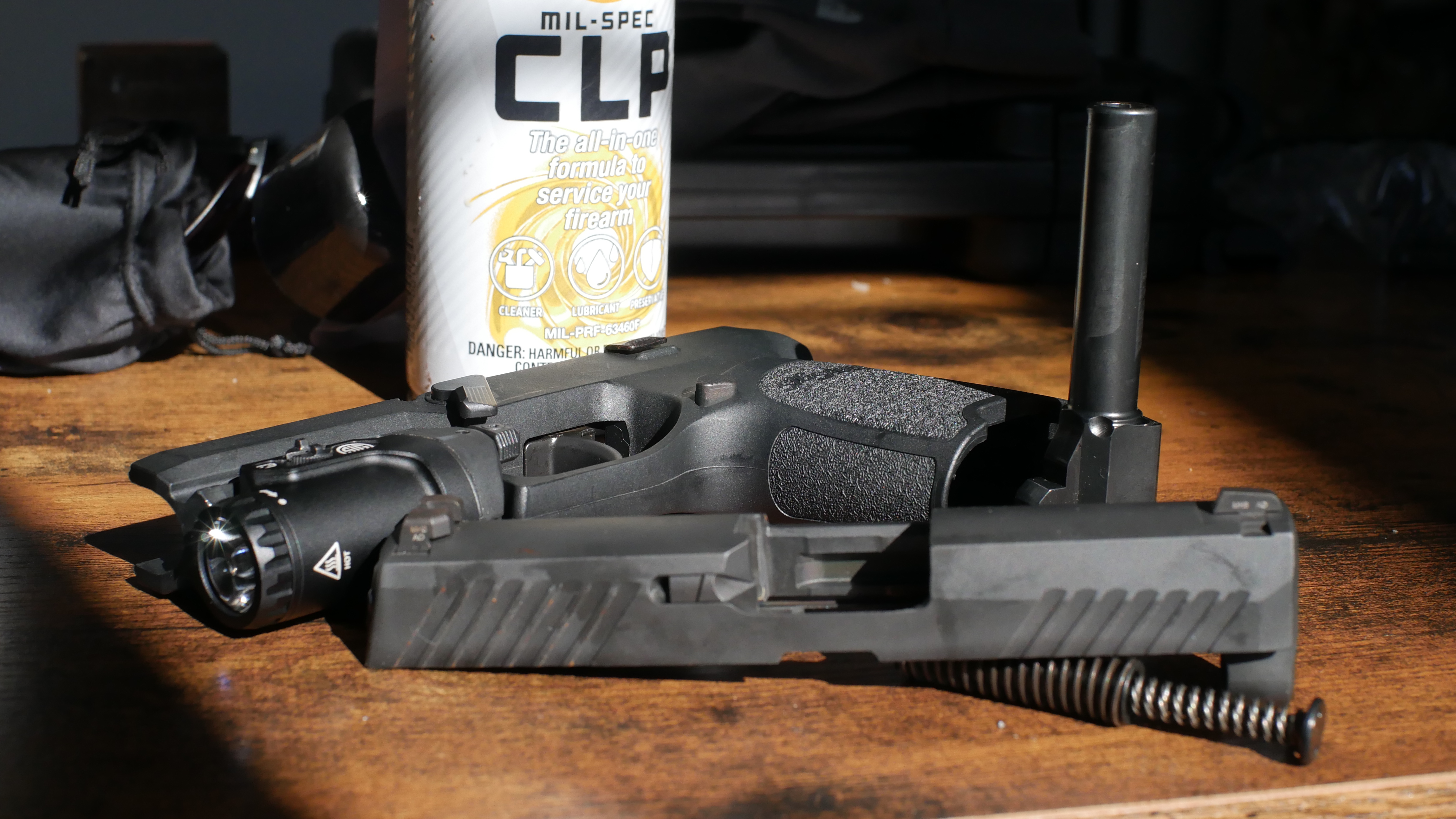Blog # 219 - How Much Lube is Too Much?

Oct 17, 2022
By Luke Cuenco
0 comment(s)
Fellow TD Blogger Adam Scepaniak recently talked about getting your guns on a routine maintenance schedule. While everyone knows we’re trying to get rid of dust, dirt, and carbon buildup, few people realize exactly what their gun lube is doing for them when it comes to the maintenance of their firearm. There are many schools of thought on exactly how much lube should be applied as well as where and when. However, I have a simple ethos for the maintenance of my firearms that has not only kept my hardest-working guns chugging along but has also helped bring some less-than-reliable guns back into service with just a quick application of CLP or Gun Oil.
Like any mechanical device, a firearm does need lubrication to keep all of its parts moving freely and with little friction as possible. Gun lube or gun oil essentially creates a molecular barrier between two surfaces that contact one another to not only provide less friction (and by extension less wear on the parts themselves), but that same molecular barrier also creates a shield against moisture buildup which could lead to corrosion on your pistol or rifle. My rule of thumb for most firearms is to put as little lube as is necessary to protect the firearm from moisture and to provide contact points with lubrication. Not much lube is needed at all during routine maintenance.
As a quick example, the SIG Sauer P320 Nitron in the featured image above usually gets a single drop of gun oil applied to each of the contact surfaces inside the firearm, as well as one drop of lube where the barrel and slide make contact during lockup. After the lube has been applied a small pre-oiled rag is used to absorb any extra gun oil so that there isn’t any excess. Any excess oil sitting on your gun, especially in a concealed carry situation, will attract dirt, dust, lint, and all sorts of other gunk that could render your firearm unreliable. As an added bonus, you can assuage any fears of gun oil working its way into your carry ammunition which could lead to even worse problems.
On the flip side, if you’re at the range and your gun starts to choke on you and you’ve already determined that it's not ammunition related, a healthy spray down of contact points with either CLP or gun oil can help get lube too hard to reach places that may have dried up during storage or during the course of fire for the day. However, when lubing guns this way, I always would recommend that you do a full strip-down after the end of your range session to mop up any excess oil. Using this simple rule of thumb for most guns, you should be able to keep them clean, free from FOD (Foreign Object Debris), and running smoothly. Thanks as always for checking out the Tyrant Designs Blog! Be sure to let us know how you lube and maintain your guns whether they are just range toys, or your daily concealed carry or duty weapons! We’d love to hear from you!
